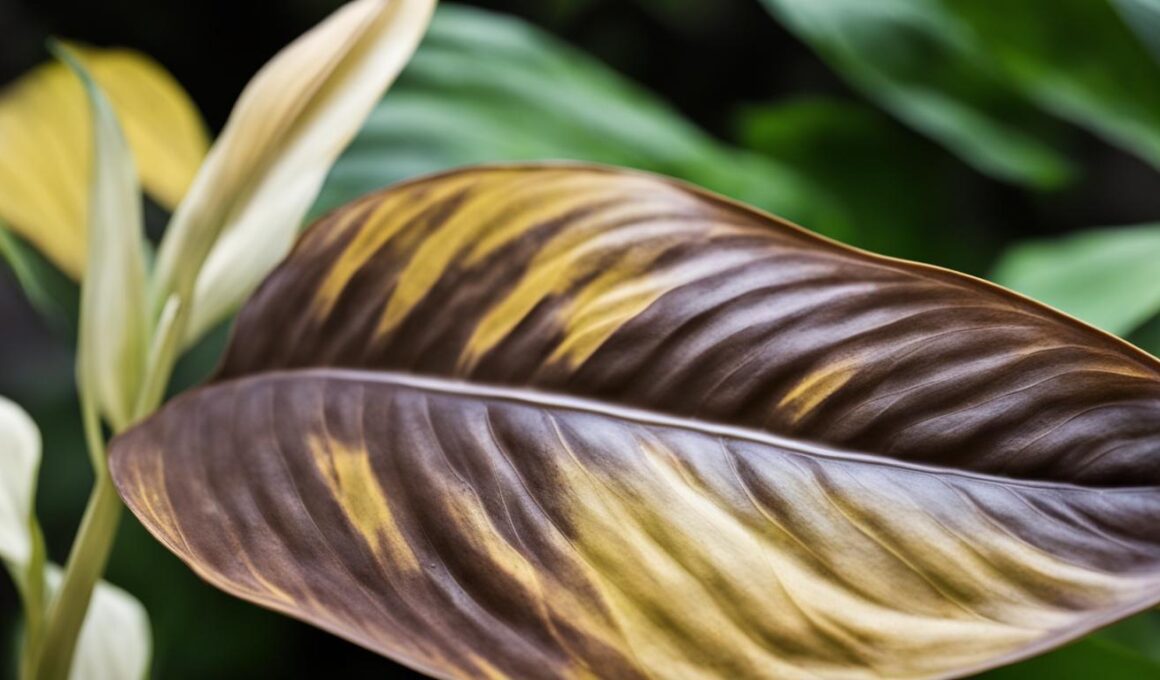If you have a peace lily, you know how beautiful and vibrant it can be with its large, glossy, green leaves and elegant white flowers. But what do you do when those leaves start to turn yellow? It can be concerning, but don’t worry, we’re here to help!
There are several potential reasons why your peace lily’s leaves may be turning yellow, and understanding these causes is the key to nursing your plant back to health. Factors such as watering practices, lighting conditions, humidity levels, nutrient deficiencies, and pests all play a role in the overall health of your peace lily.
In this article, we’ll guide you through the common causes of yellowing leaves in peace lilies and provide effective care tips to revive your plant. Whether it’s due to underwatering, overwatering, inadequate lighting, low humidity, or nutrient deficiencies, we’ve got you covered!
By the end of this article, you’ll have the knowledge and tools to address the specific issue affecting your peace lily and ensure its leaves regain their vibrant green color. Let’s dive in and give your peace lily the care it deserves!
Underwatering and Overwatering
One common reason for peace lilies turning yellow is underwatering. When the soil becomes too dry, the leaves may wilt and turn yellow. To prevent underwatering, water your peace lily as soon as the top inch of soil feels dry.
Overwatering is another common issue that can cause yellow leaves in peace lilies. Too much water can lead to root rot and yellowing leaves. If you suspect overwatering, let the plant dry out completely before watering again. If root rot has developed, remove the affected roots and repot the plant.
Finding the right balance of watering is essential for the health of your peace lily. Ensure the soil is moist but not waterlogged by adjusting your watering schedule accordingly.
Lighting, Humidity, and Nutrient Deficiencies
The lighting conditions in which your peace lily is placed can have a significant impact on the health and color of its leaves. Too much direct sunlight can cause the leaves to burn and turn yellow, while insufficient light can hinder the process of photosynthesis, leading to yellowing leaves. To maintain the vibrant green color of your peace lily, it is essential to place it in a location with bright, indirect light. This will provide the ideal balance for optimal growth and leaf coloration.
Humidity plays a crucial role in the well-being of peace lilies as they are native to tropical regions. Insufficient humidity can cause their leaves to wilt and develop a yellowish hue. To combat this, consider placing your peace lily in a bathroom, where humidity levels are naturally higher. Alternatively, using a humidifier near the plant can help increase the moisture in the air, creating a more suitable environment for your peace lily to thrive.
Nutrient deficiencies, particularly in nitrogen, iron, and magnesium, can also contribute to the occurrence of yellow leaves in peace lilies. To address nutrient issues, you can repot the plant using fresh soil that is rich in essential nutrients or incorporate a small amount of liquid fertilizer into the watering routine. This will provide your peace lily with the necessary elements to maintain its green color and prevent yellowing of the leaves. Regular monitoring of lighting, humidity, and nutrient levels will help ensure the overall health and vitality of your peace lily.
Is Yellowing a Common Sign of Plant Stress Across Different Species?
Yes, lucky bamboo turning yellow is a common sign of plant stress across different species. When a plant’s leaves start to turn yellow, it is usually a sign of overwatering, poor drainage, or lack of sunlight. It’s important to address the underlying issues to prevent further damage.









